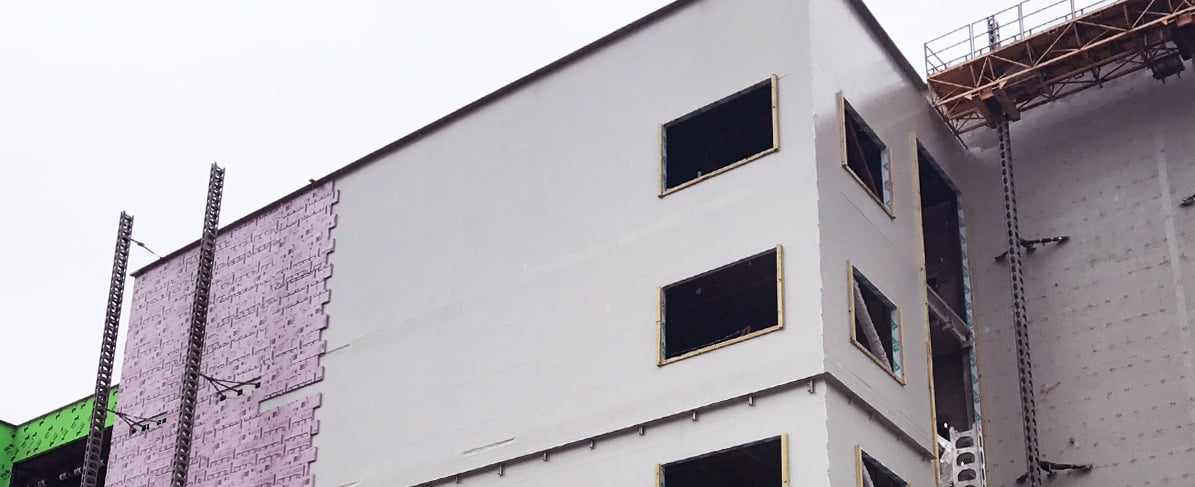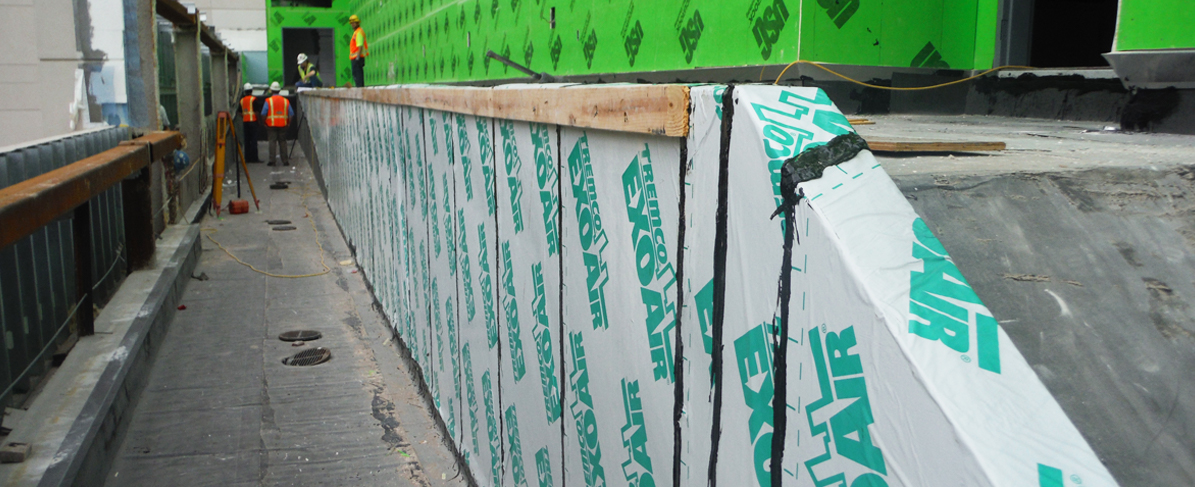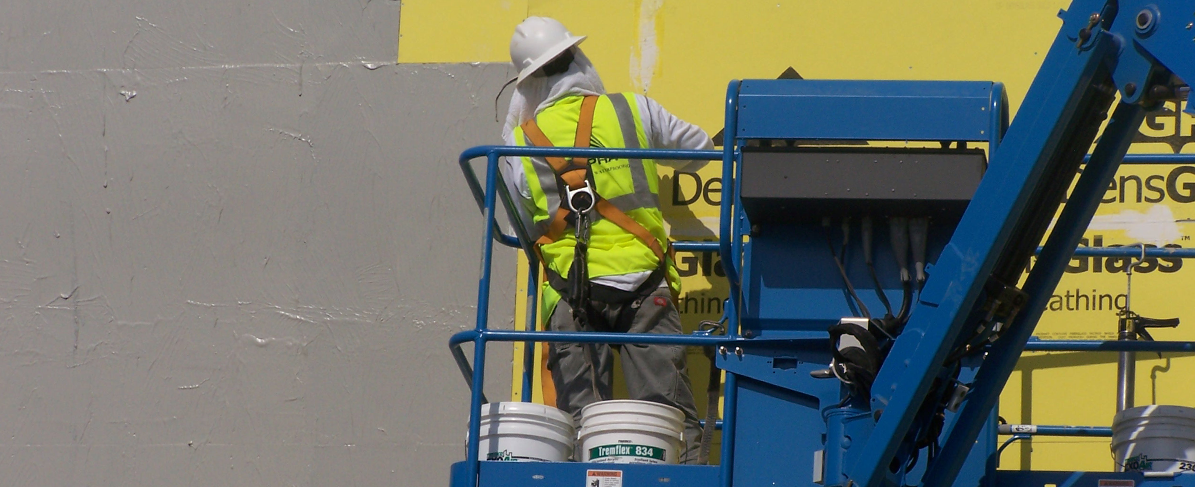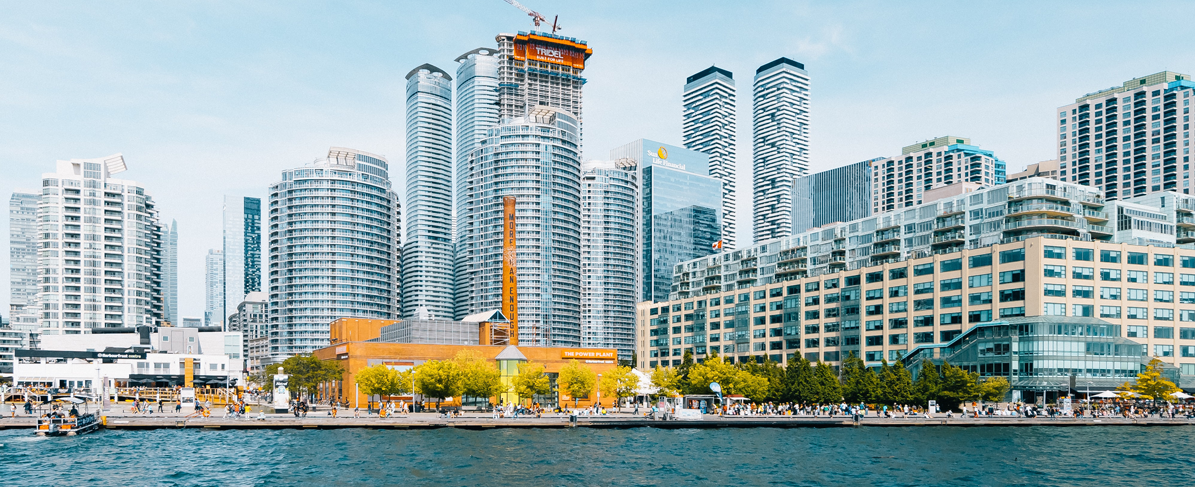In part 2 of this air barrier testing blog series, we will review existing test methods for individual air barrier components and modifications you can make to validate the functionality of full assemblies and strengthen confidence in long-term product performance.
These additional tests conducted ahead of construction will ultimately save time, effort and money for the owner, architect, contractor and consultant, because once the façade is in place, it is extremely time-consuming and costly to remove it, figure out what went wrong and start over.
For the basics of air barriers and their standard material tests, read Part 1 here.
Testing Modifications for Assembly Review
Adjustments can be made to standard material tests to enable them to measure assemblies. Additional tests also can be incorporated for a comprehensive evaluation of system performance. Be aware, however, that if ANY pieces of that assembly are changed, you will need to retest to ensure the validity of that new combination of materials.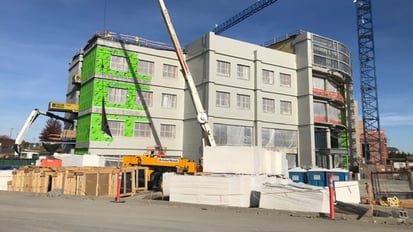
Air Permeance
Using the air leakage test, ASTM E2178, as a basis, the industry has evolved and developed ASTM E2357-05, the Standard Test Method for Determining Air Leakage of Air Barrier Assemblies. This enables testing to consider project-specific features such as windows, the façade, and all the anchors.
Water Resistance
For water leakage, you can expand upon the AATCC 127-08 Water Resistance: Hydrostatic Pressure Test. This is a visual test so it can be most effective to look not only at the surface, but break into the substrate to see for certain where, or if, there is water penetration. This destructive test can show if there is water leakage around nails or other penetrations not visible from the outside.
You can then scale the assembly up into a vertical wall condition and test it using ASTM E331- Standard Test Method for Water Penetration of Exterior Windows, Skylights, Doors, and Curtain Walls by Uniform Static Air Pressure Difference, which evaluates for water penetration for 15 minutes at 137 pascals. Code has increased the requirement to test the assembly for 2 hours at 300 pascals, which is equivalent to about 50 mph. This reinforces long-term assurance in the assembly’s performance. This also lets the contractor know, before going onto the jobsite, whether they need to use additional sealants when detailing, a peel and stick membrane, or perhaps nothing depending on the durability of the membrane chosen.
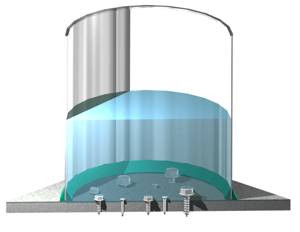
Self Sealability
The self-sealability test, as used in Section 8.9 of ASTM D1970- Standard Specification for Self-Adhering Polymer Modified Bituminous Sheet Materials Used as Steep Roofing Underlayment for Ice Dam Protection, can be taken one step further as well. Typically, this horizontal test uses smooth roofing nails through plywood. We recommend this condition be tweaked to evaluate the performance of your project-specific materials, such as the actual substrate, façade anchors and threaded fasteners, for confirmation of actual jobsite conditions.
Pull Adhesion
For individual components, we always recommend ASTM D4541- Standard Test Method for Pull-Off Strength of Coatings Using Portable Adhesion Testers, but additional connectivity testing can be achieved through AAMA 713- Voluntary Test Method to Determine Chemical Compatibility of Sealants and Self-Adhered Flexible Flashings. We recommend using AAMA 713 on any two products that come together on an assembly, whether it's a primer and a membrane, a sealant and a membrane, a sealant and a flexible flashing. This test should be an integral part of your project specification and performance testing.
Additional Considerations
From a life safety perspective, ASTM E84- Standard Test Method for Surface Burning Characteristics of Building Materials evaluates the surface flame spread and smoke density for one material. The industry has expanded this to include the assembly through the requirement of NFPA 285- Evaluation of Fire Propagation Characteristics of Exterior Non-Load Bearing Wall Assemblies. This is a wall assembly test for fire resistance, which is required in specifications and building codes. As with other assembly tests, if you change any aspect of that wall, you're going to need an engineering judgment or a new test in order to meet this criterion.

Exposure testing is another consideration to determine performance after being exposed to UV and varying temperatures for a significant length of time. Some manufacturers may say their product can be left exposed for six months, but do they have additional testing to confirm it is still durable and continuous at that point?
We also recommend a surface profile conformity test, which is used for a sub-adhered flashing and different levels of porosity of concrete. By conducting a porosity test, you can see how well rubberized asphalt gets into the nooks and crannies of a poured substrate and stays bonded.
All these various tests require communication and coordinator of all the teams involved in the project. While it may seem unnecessary, it will mitigate costly rework, getting ahead of potentially catastrophic issues, and make sure that your projects are successful.
Conclusion
Going above and beyond what is typically required in testing, making modifications and including additional testing can clear up any ambiguity regarding suitability of an air barrier system. Your expectations and performance requirements can be achieved, and you will get added peace of mind with the reduction of callbacks. If you have any questions about product or system performance, consult with the product manufacturer for specific testing results and additional evaluation that can help verify continuity, structural integrity and durability.
